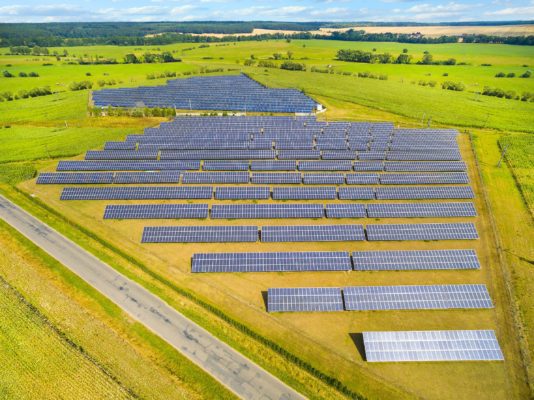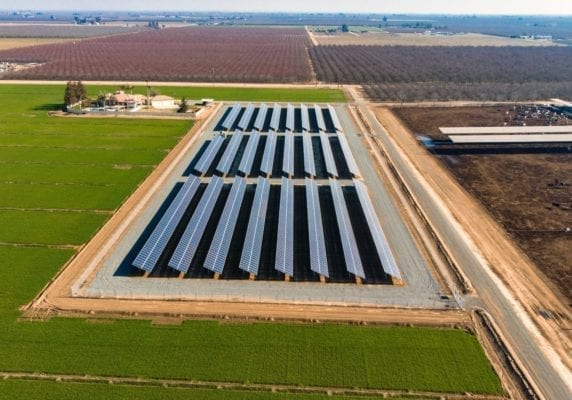
Businesses worldwide are going solar to lower their operating expenses by reducing or eliminating energy costs. Your business can massively improve your yearly balance sheets by going solar in California.
Installing a commercial solar system means generating your own electricity. As such, it provides you with a solution against rising energy costs. Besides, self-produced renewable energy in the form of usable electricity can help meet your business’ sustainability goals. Commercial solar systems produce clean energy that can reduce your firm’s carbon footprint. Additionally, it protects against power outages by ensuring power security.
Without further ado, let us discuss the lucrative solar incentives in California. This post will briefly summarize the different, most utilized commercial solar energy system incentives available in the state.
Commercial Solar Incentives in California

Despite the growing popularity of commercial solar, business owners remain unaware of the lucrative solar tax credits and incentive programs available for businesses.
Solar incentives can dramatically reduce commercial solar installation costs. It makes California an ideal state for commercial facilities to install solar photovoltaic systems to power their operations. Businesses can install solar systems on sites such as rooftops or land fields. California is also excellent, as it sees plenty of sunny days for exceptional energy generation.
Commercial solar panels’ perks for businesses go beyond direct return on their investment. For instance, it reduces businesses’ dependence on fossil fuels, decreasing grid demand. Besides these apparent benefits, businesses in various industries across California can also take advantage of the solar incentives and tax credits implemented by the state and federal governments to further empower businesses.
Your commercial solar energy system can help generate income without any drawbacks, thanks to the cost reduction via MARCS Depreciation and Federal Investment Tax Credit. Shortly after installation, your business can receive monthly SMART incentive payments. You can benefit from these incentive payments for up to twenty years. Coupling it with net energy metering (NEM) can offset your electricity bill payments.
Federal Investment Tax Credit (ITC)
The Federal Investment Tax Credit (ITC) is not a California-specific commercial solar energy tax incentive. It applies to most states across the nation. It works similarly for commercial facilities like residential properties, such as homes and apartments.
That said, ITC provides excellent benefits for businesses operating in California. It provides additional credit on your taxes at a rate of 26% of the total value of the commercial solar project. In simpler terms, this solar incentive helps reduce the amount you owe the federal government against your taxable income. It is a tax credit and not a deduction, after all.
For instance, if you install a solar photovoltaic (PV) system costing $20,000, you owe around $6,000 in taxes. You can apply for your $5,200 solar installation tax credit through the federal investment tax credits to reduce your tax liability to $1,200. As such, businesses can benefit from significant savings for their solar energy system installation.
If your tax credit’s value exceeds your tax liability, you can use your unused credit to apply for the following year’s taxes. Following the same example used above, if your tax liability is reduced to $3,000 from $6000, you can apply the unused $2,000 to the upcoming year’s taxes.
Note: Rolling over unused credit is only possible once. Also, businesses should remember that the Federal Investment Credit (ITC) is in addition to other local and state solar incentives and rebates they receive. Not forgetting, now is the best time to take advantage of ITC, which is predicted to drop to 22% by the following year in 2023 unless renewed.
Net Energy Metering

Net energy metering (NEM), or net metering, offers exceptional savings for all utility customers, including residential and commercial. Businesses with commercial solar energy systems installed on-site can use this solar financial incentive to reduce their energy costs.
Simply put, NEM is a billing structure that allows businesses to receive credit for additional surplus energy produced by their solar PV system. Net metering stores energy in one of the components of the system, the electric grid.
Often, solar panels generate more thermal or electrical energy than is needed to run the electricity-powered operations of the business. In that case, the solar panels send the excess solar energy back into the electrical grid.
Net energy metering solar incentive allows businesses to receive the credit they can use for future electricity consumption. In simpler words, business owners can give extra energy to the utility and get credit in exchange.
Your commercial solar energy system may produce more renewable energy in the form of usable electricity than your business consumes during production time- during the day when sunlight is available. Using the net energy metering solar incentive or billing plan will cause your billing meter to run backward. As a result, it will provide your business credit against the electricity it might consume during other periods when energy is not being produced, such as the night hours or rainy/ cloudy days.
Businesses on net energy metering billing plans only receive electricity bills for their net energy usage. Your region’s local utility company will calculate your electricity bill by measuring the annual energy consumption instead of calculating it monthly.
NEM for commercial solar PV systems sells unused solar power in the electrical grid for additional credit. Besides helping you save money on future energy usage, this incentive may help your solar panels generate electricity more efficiently.
Net metering is a popular approach across most states in the U.S., as it compensates solar owners for the energy they give to the electric grid. NEM is necessary for businesses and homeowners in California, increasing rooftop solar panels’ value.
According to the rules, new commercial solar energy systems require sizing to meet customer demand. The sizing cannot be higher, and your business will need to use a time-of-use electricity rate. Additionally, the amount of credit your business will receive depends on when you install the commercial solar energy system.
California’s net metering incentive requires the three investor-owned utilities, including Southern California Edison, San Diego Gas & Electric, and Pacific Gas and Electric, to purchase their excess renewable electricity at retail rates. Business owners can receive credits if their system is less than one MW (kilowatts). They receive a per-kWh credit for the electricity equal to one kWh of the utility’s regular electricity.
Property-Assessed Clean Energy

Property-Assessed Clean Energy (PACE) incentive programs are available for residential and commercial properties. In commercial settings, they allow business owners to finance their solar energy projects, reducing upfront costs. PACE programs also apply to other types of energy efficiency projects.
In a PACE program, the state or local governments typically cover the initial costs of commercial solar PV projects. Later, business owners use property assessments to pay back the improvement costs. Typically, the property secures itself, and business owners pay the expenses through property taxes. Usually, payment defaults result in the same violations as failure to pay other portions of property tax bills.
Statements by the Department of Energy reveal that commercial property-assessed clean energy (C-PACE) programs have financed more than $800 million in different projects across local governments, regions, and states.
Local Solar Rebates
Across California, several cities offer solar rebates for businesses and commercial facilities. Local solar rebates are in addition to or including solar tax credits and incentives. These include all financial tax credits and incentives offered to a business by state and federal governments.
To use a solar rebate program, you need to check with your local municipality, as the requirements and regulations might differ. A visit or call to the local municipality is sufficient for finding out the rebates they offer for commercial solar energy system installations.
Self-Generative Incentive Program
The Self-Generative Incentive Program (SGIP) aims to encourage SCE, PG&E, and SDG&E consumers to install technologies like solar systems that help reduce their dependency on the electric grid. Other qualifying technologies include wind turbines, fuel cells, and advanced energy storage systems.
Battery storage systems are excellent for storing and using your solar energy later. Businesses can utilize the stored energy when the electricity rates go down. In the case of the lower grid and rolling blackouts, you can run your business operations using the stored energy.
Similarly, you can benefit from the self-generative incentive program by installing a solar-plus-energy storage system. You can call solar energy system professionals to look at other options for SGIP-qualifying technologies.
Solar Incentives for Businesses with a Commercial Solar Energy System

California is a golden state for businesses to install commercial solar PV energy systems. It offers businesses plenty of opportunities to generate electricity through clean and renewable energy.
Besides, California has some of the nation’s most robust solar tax credits and incentives for commercial facilities. You can take advantage of the California commercial solar incentives to save money on project installation and reap the other benefits of creating your electrical energy, such as more power security.
Get in touch with Coldwell Solar for more information, tips, and guidance regarding commercial solar systems.

